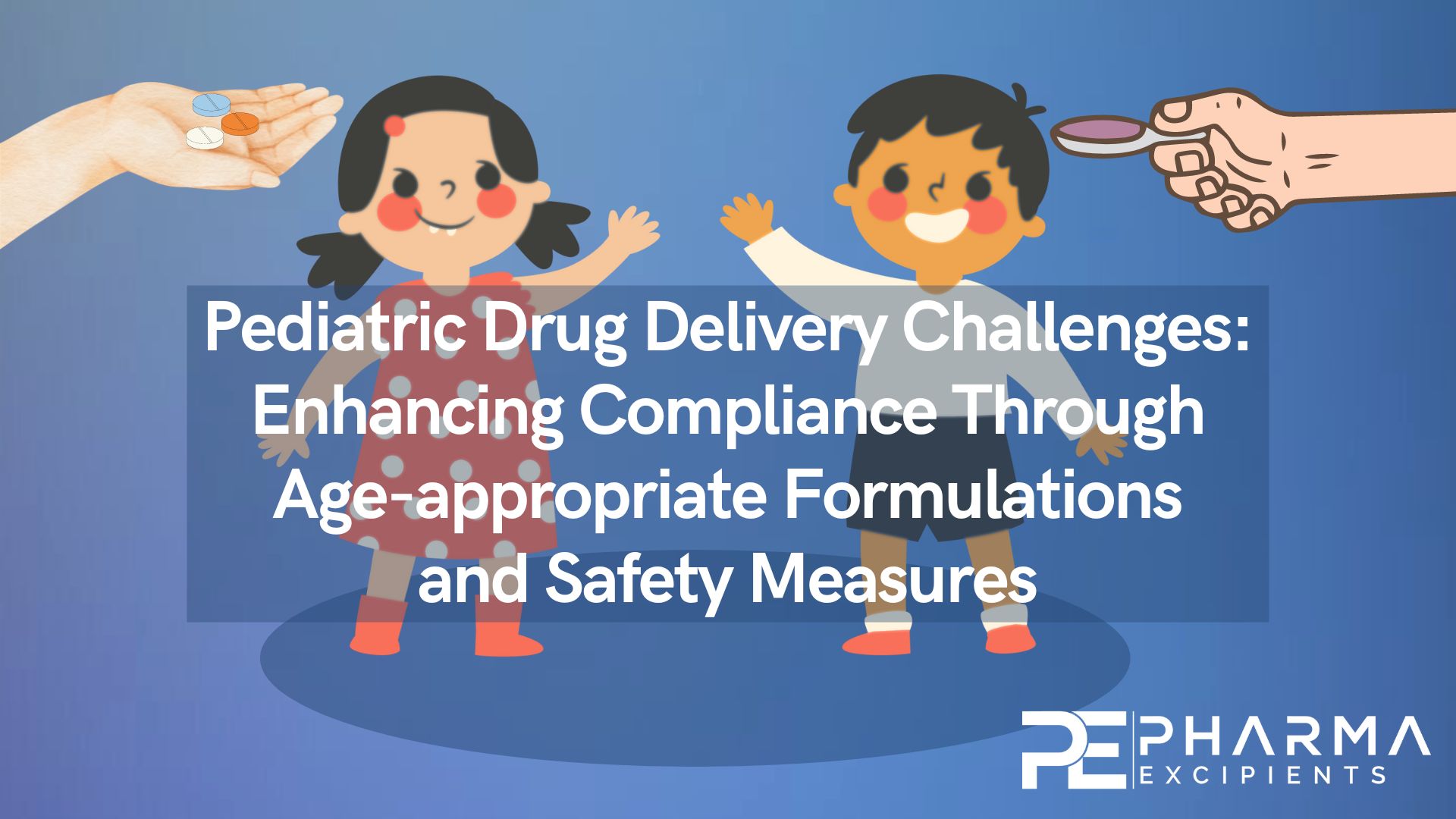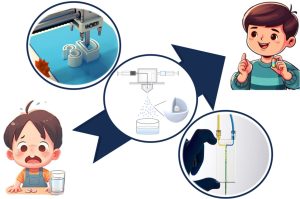Pediatric Drug Delivery Challenges: Enhancing Compliance Through Age-appropriate Formulations and Safety Measures

Abstract
Pediatric pharmacotherapy presents distinctive challenges compared with adult pharmacotherapy and encompasses considerations such as drug administration methods, susceptibility to medication-related toxicity, and taste preferences that influence compliance and efficacy. Customizing pediatric medicines is crucial for tailoring formulations to the age, size, physiological state, and specific treatment needs of a child. To effectively address diverse pediatric cases, a range of administration routes, dosage forms, and strengths may be necessary for optimal therapeutic outcomes. Recent advances in pediatric formulations have been propelled by emerging regulations, increasing avenues of financial support, and novel collaborative research endeavors. This review addresses the challenges intricately linked to pediatric drug administration, offering a comprehensive exploration of the impediments encountered in the delivery of pharmaceuticals to this specific demographic. The analysis encompasses nuanced aspects such as dosage adjustments, formulation considerations, and physiological variations, providing a holistic understanding of the complexities involved in optimizing drug therapies for children. The comprehensive exploration of medication administration to children encompasses critical factors such as dosage forms, palatability, and essential safety considerations, illuminating nuanced aspects crucial for pediatric healthcare. Our review sheds light on existing pediatric drug administration, highlighting concerns surrounding taste appeal, varied dosage structures, and the pivotal factors of patient adherence. We also discuss recent advancements in tailored drug formulations for different age groups, innovative delivery mechanisms, and safety protocols meticulously crafted for the pediatric population.
Introduction
Pediatric drug delivery is a critical domain within the healthcare and pharmaceutical sectors, catering to the distinctive requirements and susceptibilities of children with regard to medication administration (1). This significance is rooted in several pivotal dimensions. First, pediatric patients, particularly infants and young children, exhibit marked physiological variations from adults that profoundly influence drug behavior within their bodies, affecting absorption, distribution, metabolism, and excretion (2). Hence, developing age-appropriate formulations and dosage forms is vital to uphold the safety and effectiveness of pharmaceutical interventions for this uniquely delicate population. Moreover, pediatric drug delivery has profound significance because of the direct impact on treatment adherence (3). Children often grapple with medication because of issues of taste, size, or form, leading to noncompliance and jeopardizing therapeutic outcomes (4). By refining the palatability and ease of drug administration, we can significantly increase the likelihood of children receiving the proper treatment in the correct manner (5). Furthermore, the pediatric demographic poses exceptional challenges for clinical research and pharmaceutical advancement (6). Complex ethical considerations govern clinical trials involving children, and ensuring safety is paramount. Developing drug delivery systems that not only prove effective but also exhibit a high degree of safety is an absolute priority. This emphasis on safety is essential for averting adverse events or potential overdosing, which can have profound consequences within this specific age group.
Ensuring compliance in pediatric drug delivery is a multifaceted challenge that is essential for effective treatment outcomes and the well-being of young patients (7). Children are frequently unable to swallow pills or tablets and require age-appropriate formulations that are both agreeable and easy to administer. Safety measures are required to avoid accidental ingestion or overdose (8). Achieving compliance requires addressing these critical issues. Healthcare providers and pharmaceutical companies must collaborate to fabricate innovative drug delivery solutions tailored to the exclusive needs of pediatric patients. Age-appropriate medication formulations, including liquid suspensions, dissolvable tablets, and flavored drugs, can greatly enhance medication acceptance and adherence among pediatric patients (9). Moreover, ensuring safety measures, such as child-resistant packaging, and providing clear dosing instructions is essential in preventing accidental harm. A comprehensive exploration of these aspects within the field of pediatric drug delivery is not only vital for healthcare providers but also for researchers and policymakers as this contributes to the overall improvement of pediatric healthcare quality (10). Figure 1 illustrated the growth of different dosage forms for pediatrics.
This scientific review aims to thoroughly investigate the hurdles associated with drug delivery in the pediatric population. We place particular emphasis on the creation of formulations suitable for different age groups and the implementation of safety protocols. This study comprehensively explores the intricacies surrounding the administration of medications to children, delving into critical facets such as dosage forms, palatability, and paramount safety considerations. Through a multifaceted, interdisciplinary approach, the central objective of this review is to offer valuable insights and evidence-based recommendations. These insights can substantially augment medication adherence, elevate treatment outcomes, and fortify the safety of pediatric patients, thus making substantial contributions to pediatric healthcare. The principal aims of this review encompass an in-depth analysis of the current challenges within pediatric drug delivery, with a specific focus on issues concerning palatability, diverse dosage forms, and the critical aspect of patient compliance. Another objective is to investigate the latest developments in age-appropriate drug formulations, novel delivery systems, and safety measures specifically designed for pediatric populations.
Read more here
Devesh U. Kapoor, Rahul Garg, Mansi Gaur, Meenakshi B. Patel, Vahid Vikram Minglani, Bhupendra G. Prajapati, Kampanart Huanbutta, Tanikan Sangnim, Pornsak Sriamornsak, Pediatric Drug Delivery Challenges: Enhancing Compliance Through Age-appropriate Formulations and Safety Measures, Journal of Drug Delivery Science and Technology, 2024, 105720, ISSN 1773-2247, https://doi.org/10.1016/j.jddst.2024.105720.
Read more interessting articles on Paediatric here:
- The challenge of downstream processing of spray dried amorphous solid dispersions into minitablets designed for the paediatric population
- Pediatric Formulations Developed by Extrusion-Based 3D Printing
- Innovative pharmaceutical techniques for Paediatric dosage forms


